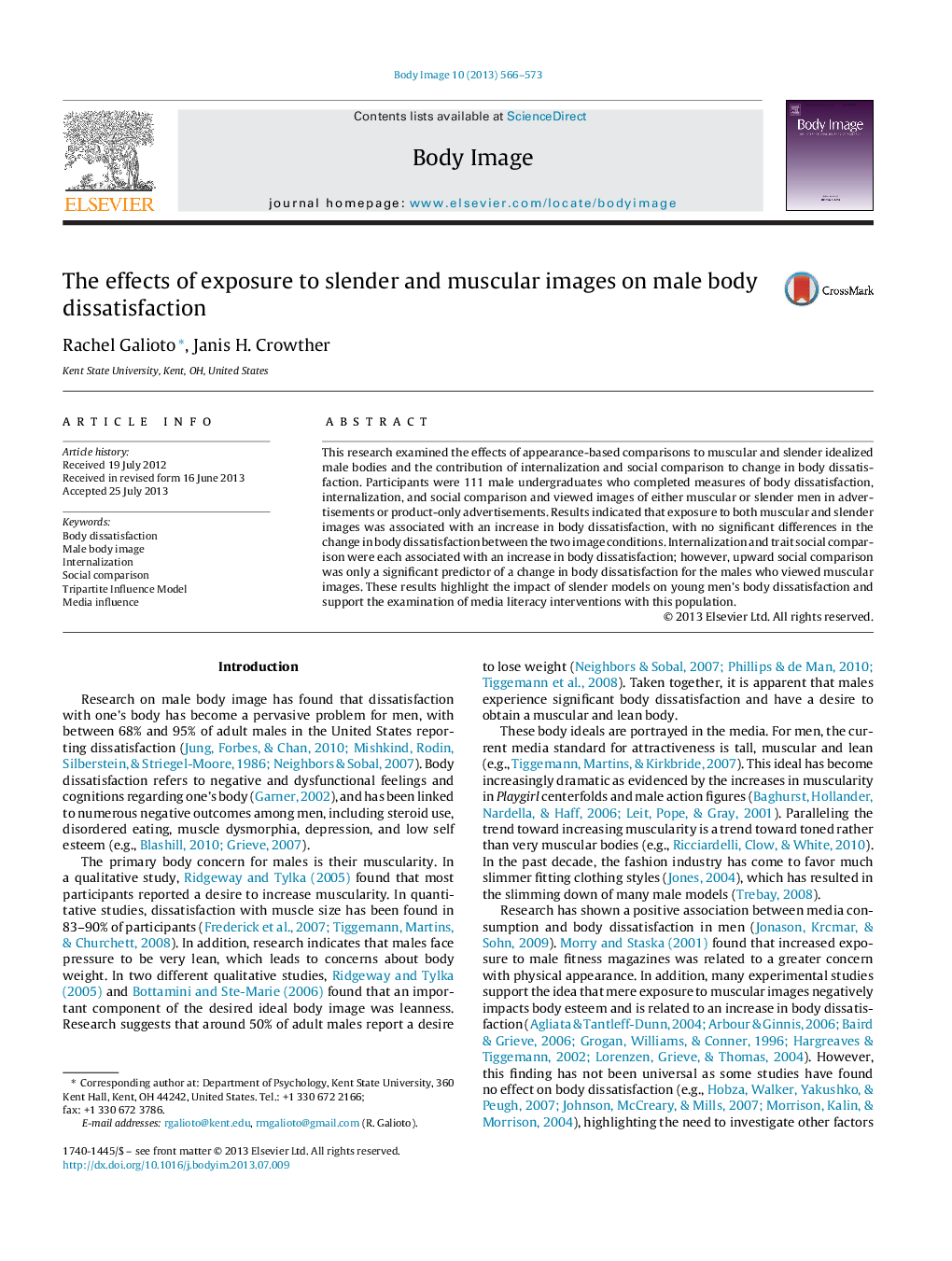| Article ID | Journal | Published Year | Pages | File Type |
|---|---|---|---|---|
| 902907 | Body Image | 2013 | 8 Pages |
•Exposure to muscular and slender images was associated with an increase in body dissatisfaction among male undergraduates.•The difference in the change in body dissatisfaction between the two image conditions was not significant.•Internalization and trait social comparison was associated with an increase in body dissatisfaction in both conditions.•Upward social comparison was associated with an increase in body dissatisfaction for the muscular condition only.
This research examined the effects of appearance-based comparisons to muscular and slender idealized male bodies and the contribution of internalization and social comparison to change in body dissatisfaction. Participants were 111 male undergraduates who completed measures of body dissatisfaction, internalization, and social comparison and viewed images of either muscular or slender men in advertisements or product-only advertisements. Results indicated that exposure to both muscular and slender images was associated with an increase in body dissatisfaction, with no significant differences in the change in body dissatisfaction between the two image conditions. Internalization and trait social comparison were each associated with an increase in body dissatisfaction; however, upward social comparison was only a significant predictor of a change in body dissatisfaction for the males who viewed muscular images. These results highlight the impact of slender models on young men's body dissatisfaction and support the examination of media literacy interventions with this population.
